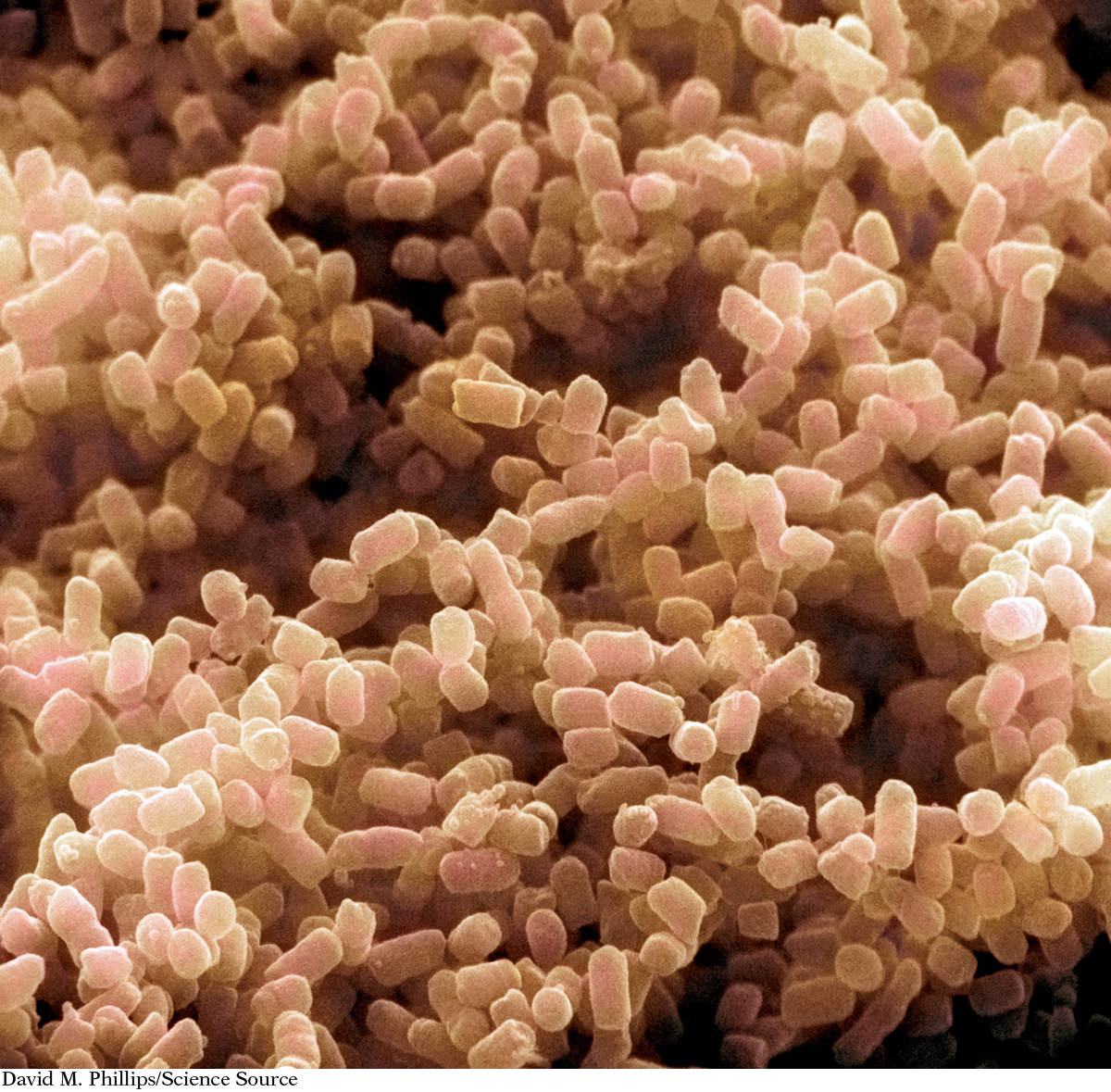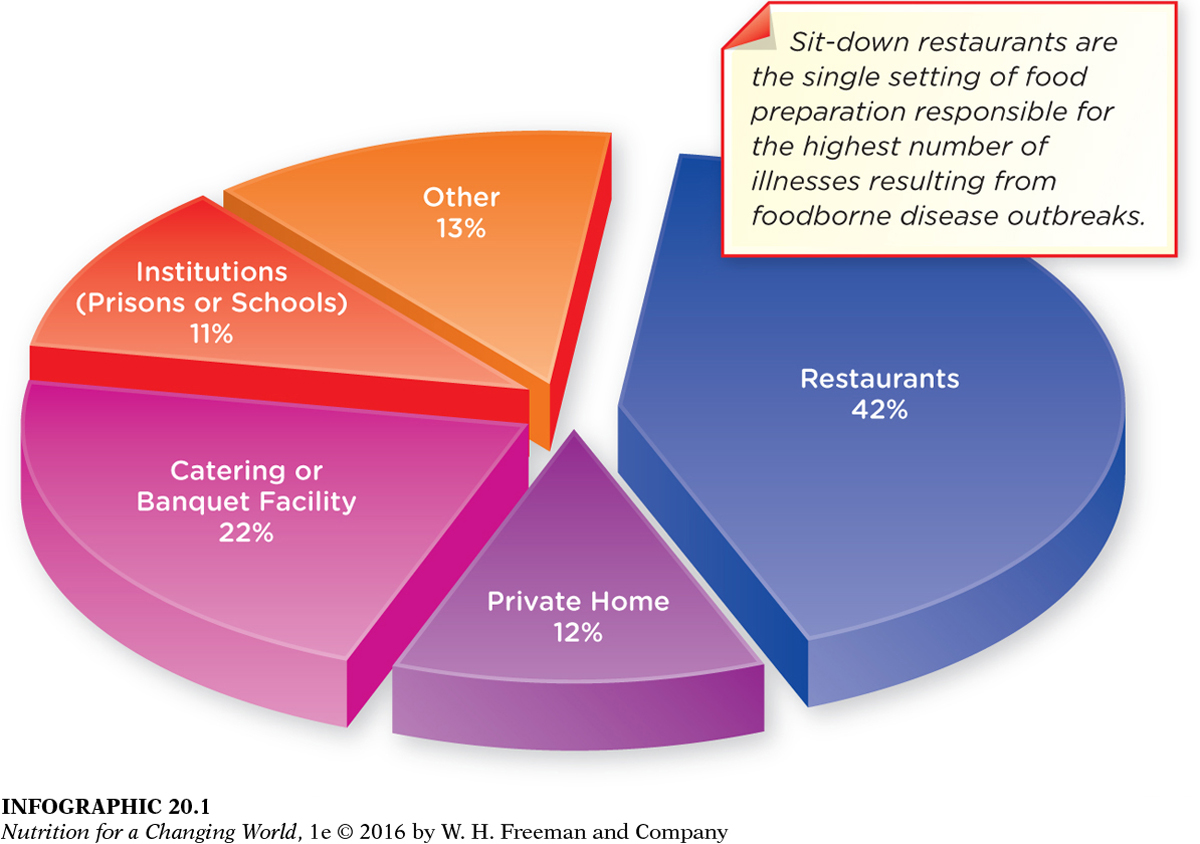Chapter Introduction
20
FOOD SAFETY AND FOOD SECURITY

LEARNING OBJECTIVES
Identify the locations of food preparation that are associated with the highest incidence of foodborne illness outbreaks (Infographic 20.1)
Describe ways in which food can be contaminated at each point from “farm to fork” (production to consumption) (Infographic 20.2)
Name at least three of the most common pathogens that can cause foodborne illness, and name their common food sources (Infographics 20.3 and 20.4)
Identify the groups most vulnerable to foodborne illness (Infographic 20.5)
Define “organic” and explain how the term is used on food labels (Infographic 20.11)
Describe how food additives are regulated in the United States and the primary reasons for their use (Infographic 20.12)
Discuss the status of food security in the United States (Infographic 20.13)
Discuss the potential benefits and risks of genetically modified foods (Infographic 20.14)
Identify areas in the world where undernourishment is common (Infographic 20.15)
In late summer of 2006, as Americans flocked to watch Samuel L. Jackson do battle with Snakes on a Plane, mourned the demotion of Pluto from planet to giant interstellar rock, and learned to Tweet for the first time, emergency department doctors around the country began to notice an unnerving number of cases of people complaining of severe gastric distress.
This was no ordinary stomachache. People hobbled into the emergency department doubled over in pain, with searing abdominal cramps, rectal bleeding, and bloody diarrhea. These were likely cases of food poisoning, but the severity of the symptoms suggested a more insidious cause than your standard foodborne pathogen.

Laboratory tests eventually revealed that these individuals were suffering from infection with a particular strain of Escherichia coli (E. coli), known as O157:H7. E. coli is a common form of bacteria, found in the intestines of many animals, including humans. Strain O157:H7 has acquired additional genes from other bacteria that make it especially toxic. It is one of several Shiga toxin–
When the first of these patients with gastric problems started arriving in Wisconsin emergency departments, it was not yet clear that an outbreak was at hand. But soon, remarkably similar cases began popping up in other states. By autumn, some 200 people in 28 states had been sickened, more than half of whom required hospitalization, and three died. The common factor linking all these individuals? They had all eaten Dole brand spinach from a bag.
FDA scientists eventually traced the E. coli outbreak to a spinach packaging plant in San Juan Bautista, California. DNA testing pinpointed the plot of land where the tainted spinach had been grown. “The spinach originated from really just one corner of one field in California,” says Caroline Smith DeWaal of the Center for Science in the Public Interest (CSPI), a nonprofit advocacy group. “And the spinach got into a washing facility where it contaminated the water, and then a lot of spinach got contaminated. Then that was shipped all over the country.”
As consumers were warned to stop buying bagged spinach, some nagging questions loomed over the entire episode: How could this have happened? Don’t we have protections in place to protect our food supply?
The 2006 spinach outbreak brought to light, in the most unfortunate way possible, certain flaws in the nation’s food safety control system. What experts in food safety had known for a while became painfully clear to the average American: The nation’s food supply was not as safe as many believed. (INFOGRAPHIC 20.1)

Question 20.1
 Give two likely reasons why restaurants are the location of the majority of foodborne illnesses.
Give two likely reasons why restaurants are the location of the majority of foodborne illnesses.
Restaurants are the source of many foodborne illnesses because there are multiple food handlers (cooks and wait staff) who may not uniformly practice safe food-